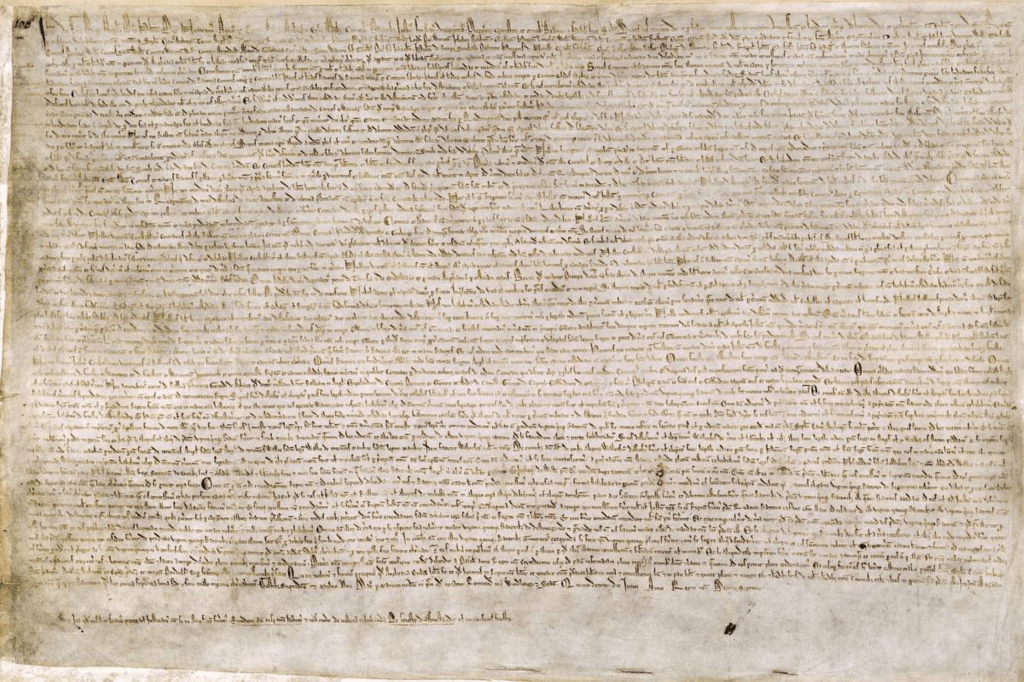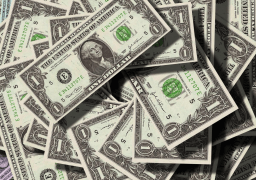Magna Carta Day
Magna Carta Day is observed next on Monday, June 15th, 2026 (160 days from today).

Magna Carta Day on June 15th commemorates the signing of the Great Charter that limited the powers of the English monarch.
Magna Carta is Great Charter in Latin, which is one of the most important documents in political history. Drafted in England and signed on June 15th, 1215, it outlined the rights of the common people and the limits of the monarchy's power. Since then, it has been used as the basis for civil liberties around the World, promoting the cause of liberty, constitutionalism and parliamentaryism.
Why not celebrate Magna Carta Day by declaring your own parchment. Take a piece of white paper and crumple it into a ball, then open it and use a cotton ball soaked in some black coffee to wipe it. Dry with a hair dryer and your parchment will look old and yellow. Write down your statement with a fountain pen or feather marker. Make a seal by dripping candle wax on the corner and creating a coin impression.
History of Magna Carta Day
Magana Carta Day has been celebrated for generations. However, there is no official recognition of the date. In fact, in 1947, there was an official date of rejection. You can get more knowledge about this day through the National Archives of the United Kingdom website.
Although the Magna Carta came into being after the barons rebelled against King John's taxes and feudal laws, it outlined specific rights and privileges that previous documents had avoided. On June 15th, 1215, King John signed the document at Runnymede.
Some of the weight of the proceedings written into our law today comes from articles written in the Magna Carta over 800 years ago. Jury trials of our colleagues and restitution of confiscated goods for national need were both basic principles laid down in 1215.
The design of the Magna Carta has influenced the creation of important documents governing the modern world. In 1689, the British Bill of Rights was signed, which again limited the power of the monarchy and 13 articles specifically stating liberties. Design and concepts related to Magna Carta. The U.S. Constitution, the Declaration of Independence, the Bill of Rights, and the constitutions of many states all rely on the Magna Carta for guidance.
Origin of the Magna Carta
With the conquest of England in 1066, William I secured for himself and his immediate successors an unprecedented position of power. He was able to rule not only the country but also the barons who helped him win it and the churches that served the Church of England. He forced Pope Alexander II to content himself with indirect control of the church in a land the pope had hitherto considered bound by his closest ties to Rome. William's son Henry I - whose accession to the throne (1100) was challenged by his eldest brother, Robert, duke of Normandy was forced to make concessions to the nobles and clergy in the Charter of Freedom, a decree Royal order were issued when he was crowned. His successor, Stephen (1135), whose throne was threatened by Matilda, daughter of Henry I, again issued a solemn charter (1136) with more generous promises of good government in church and state. Matilda's son Henry II also began his reign (1154) by issuing a solemn charter that promised to restore and confirm the liberties and liberal customs enjoyed by King Henry, his grandfather. He had given God and the holy church as well as all the earls, barons and all men. In fact, there developed throughout the 12th century, a continuing tradition that the king's coronation oath should be bolstered by written promises stamped with the king's seal.
Although the volume of common law increased during that period, especially during the reign of Henry II (which ended in 1189), no conflicting definitions were warranted in relation to the financial liabilities of stripped men for the crown. Nor did the Baronage have a definition of the right of justice they held over their subjects. As the Angevin administration became ever more solid with erudite judges, competent financiers and trained secretaries in its service, the barons overall became more conscious of the weakness of his position in the face of the agents of the crown. Additional discontent among the nobility was the increase in taxes during the reign of Richard I (1189–99), as a result of the Crusades, his ransom, and his war with France. John faced many of those challenges when he ascended to the throne in 1199. His already precarious position was further weakened by the claims of his rival Brittany's nephew Arthur and determination of Philip II of France in ending the British hold on Normandy.
Unlike his predecessors, John did not issue a common charter for his barons at the beginning of his reign. In Northampton, however, the Archbishop of Canterbury Hubert Walter, royal advisor William Marshal, and judge Geoffrey Fitzpeter summoned the nobility and promised on behalf of the king (who remained in France) that he would exercise each right their own if they want to keep faith and peace with him. Since 1201, however, the earls refused to cross the English Channel to serve the king unless he promised them in advance "their right". In 1205, facing the threat of invasion from France, the king was forced to swear that he would preserve the interests of the kingdom unharmed. After the loss of Normandy in 1204, John was forced to rely on English resources alone, and the crown began to feel new urgency in the matter of revenue collection. The demands for scutage (money paid in lieu of military service) became more and more frequent. A quarrel with Pope Innocent III over the election of Stephen Langton to see Canterbury resulted in a papal ban (1208–13) and left the Church of England defenseless in the face of John's financial demands. The king's excommunication in 1209 stripped him of some of his worst administrators. Not surprisingly, when peace with the church was made and Langton became archbishop of Canterbury, he emerged as a central figure in the baronial unrest. Indeed, it was Langton who advised that the claim to be solemnly granted liberty by the king should be based on Henry I's coronation charter.
How to celebrate Magna Carta Day
Learn more about Magna Carta by visiting the Magna Carta Project or visiting one of the four remaining copies. There are two at the British Library, and one at Lincoln Cathedral. Salisbury Church at Runnymede where King John agreed to the terms of the document still holds a fourth copy. The museum there holds an annual festival in honor of the day. Use #MagnaCartaDay to share on social media.
Observed
Magna Carta Day has been observed annually on June 15th.Dates
Saturday, June 15th, 2024
Sunday, June 15th, 2025
Monday, June 15th, 2026
Tuesday, June 15th, 2027
Thursday, June 15th, 2028


